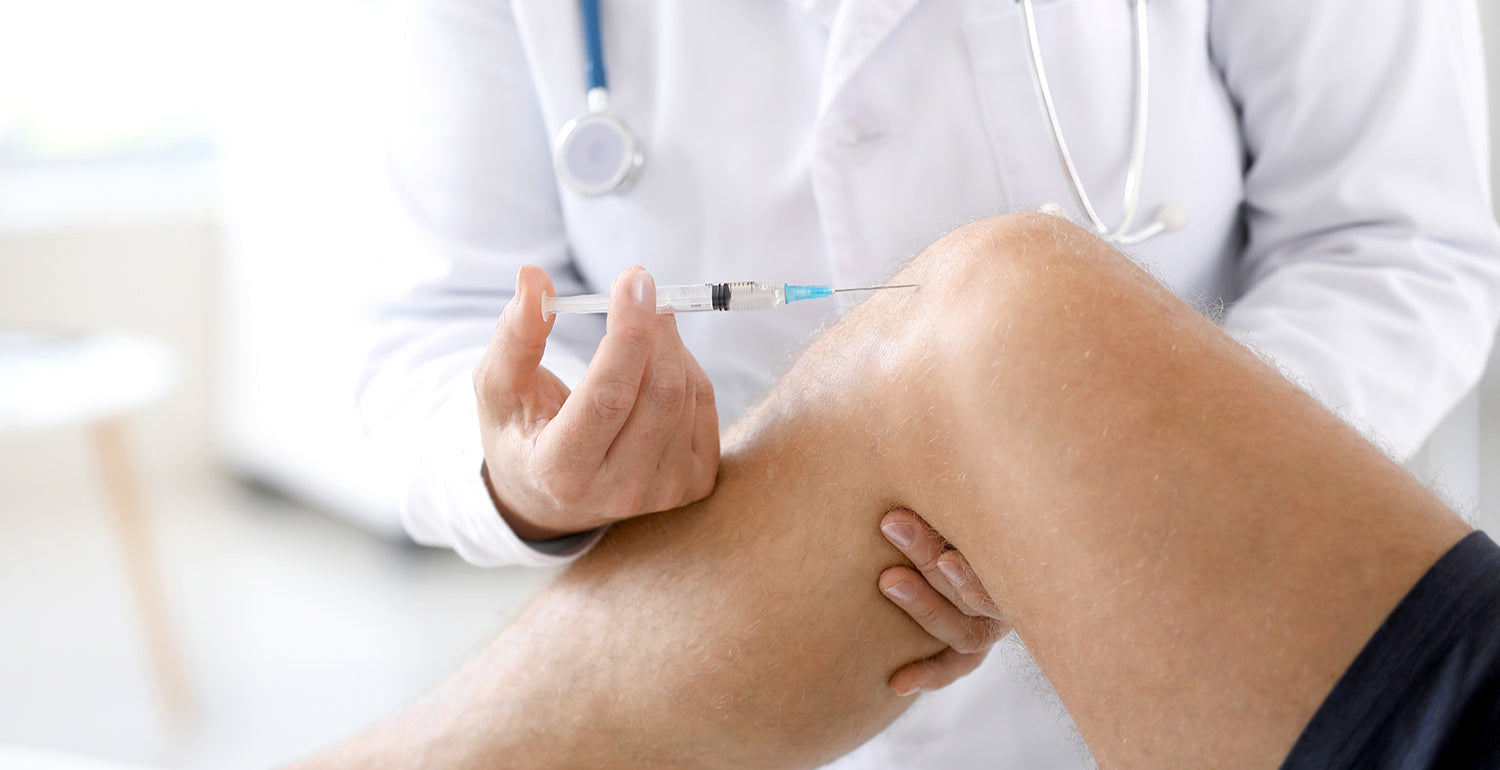
Joint Injections / Biologics
Injections are a valuable treatment option for managing joint pain and inflammation in both the knee and hip.

-
Hyaluronic Acid Injections (Viscosupplementation)
Hyaluronic acid is a gel-like substance that naturally exists within healthy joint fluid and acts as a lubricant and shock absorber. In arthritic joints, the concentration of hyaluronic acid is often reduced.
Injecting hyaluronic acid into the knee or hip can help restore lubrication, reduce stiffness, and improve movement. It may be a good option for patients with mild to moderate osteoarthritis who are not yet ready for surgery. Relief can develop gradually and may last several months.
These injections are generally well tolerated and are usually administered as a short course of injections. -
Platelet-Rich Plasma (PRP) Injections
PRP is a newer, biologically based treatment that uses a concentrated sample of your own blood, rich in growth factors that promote tissue repair and reduce inflammation.
PRP injections may be beneficial for early arthritis, tendon conditions, or mild cartilage damage in the knee or hip. As it uses your body’s own healing components, it is considered a natural treatment option with low risk of side effects.
PRP is not a quick-fix and is generally used in carefully selected patients. It may take several weeks to feel the full benefit, and a short course of two to three injections may be recommended for best results. -
Corticosteroid (Steroid) Injections
Steroid injections are commonly used to reduce inflammation within the joint and relieve pain. They contain a synthetic version of the body’s natural anti-inflammatory hormone and are often combined with a local anaesthetic for immediate relief.
These injections are often used for osteoarthritis, inflammatory flare-ups, or after injuries where swelling and discomfort are limiting movement. Relief may last from a few weeks to several months.
While steroid injections can be highly effective in the short term, repeated use over time may potentially weaken cartilage or soft tissue, so their use is typically limited to a few times per year. -
Injections for Hip and knee Pain
Injections are a valuable treatment option for managing joint pain and inflammation in both the knee and hip. They can be used to relieve symptoms in conditions such as osteoarthritis, cartilage injury, tendinopathy, or bursitis. In some cases, injections can help delay or avoid the need for surgery, particularly in the early to moderate stages of joint degeneration.
There are several types of joint injections available. The right option for you will depend on the cause of your symptoms, your level of activity, and your response to previous treatments. -
What to Expect
Injections are typically performed in the clinic using sterile technique. For deeper joints such as the hip, ultrasound or X-ray guidance may be used to ensure accuracy. You may be asked to rest the joint for a day or two afterwards, and mild post-injection soreness is not uncommon.
The effect of the injection varies depending on the type, the underlying condition, and your individual response. These treatments are often used alongside physiotherapy, lifestyle changes, and other non-operative strategies as part of a comprehensive approach to joint care. -
Is an Injection Right for Me?
Injections can be a valuable way to manage symptoms without surgery, particularly in the early stages of arthritis or for managing flare-ups. As an orthopaedic knee and hip specialist, I will assess your condition, review your imaging, and guide you through the most appropriate treatment options—including whether an injection is likely to benefit your specific situation.
